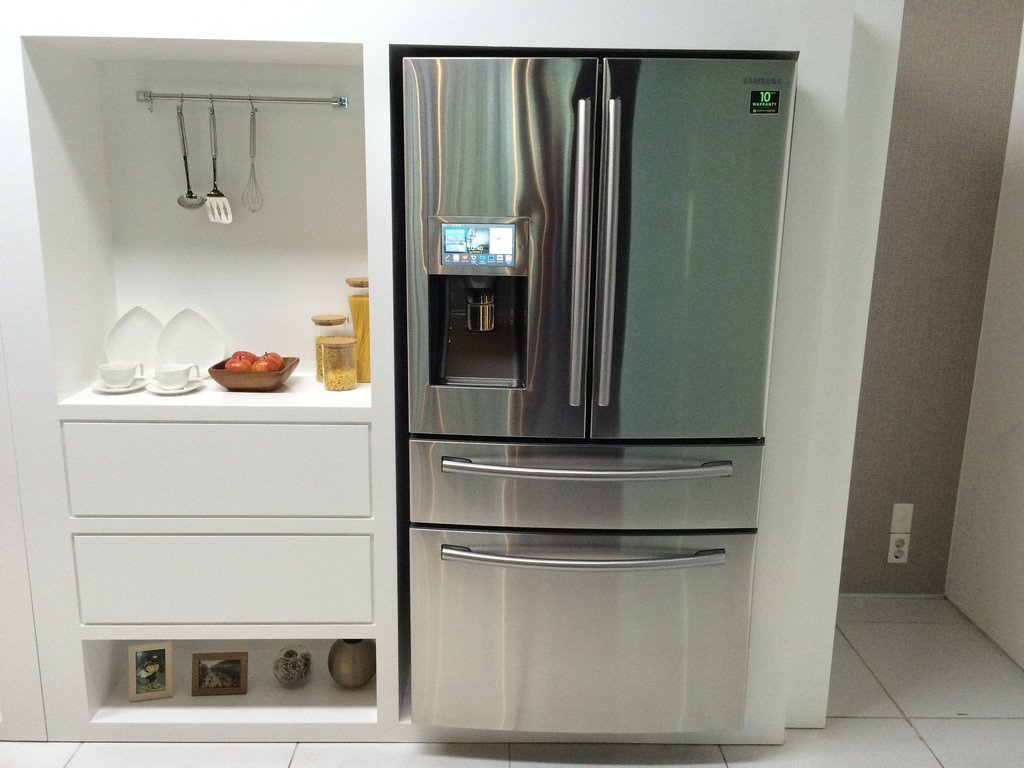There has never been a shortage of tech trends.
The real problem for you is figuring out which ones will happen so that you know where to place your strategic bets.
Top 20 tech trends shaping in 2018 and beyond
I have been publishing lists of top trends since 1983, as well as speaking and writing about their future impact, and if you have read any of my seven books or thousands of articles over the decades, you know they have been highly accurate.
The reason for this is the methodology that I developed back then, which separates what I call Hard Trends, the trends that will happen, from Soft Trends, the trends that might happen.
Knowing their distinctions can make all the difference, and the following Top 20 List is no exception.
I have been writing about each one of these tech trends for many years, but for one to make it on my Top 20 list, it has to be developed enough for you to apply it to exponentially grow your business.
Each is growing at an increasingly exponential rate. As such, they will all impact our lives, both personally and professionally, in the coming year and beyond.
These tech trends highlight enormous, game-changing opportunities in a broad array of applications and industries.
As you read through them, look for opportunities for you to leverage them and become a positive disruptor.
#1 Artificial Intelligence (AI), Advanced Machine Learning and Cognitive Computing Applications
Cognitive computing applications grow rapidly.
Advances in machine learning and artificial intelligence (AI), such as Google’s DeepMind and IBM’s Watson, coupled with networked intelligent machines and sensors will create a giant leap forward thanks to exponential advances in computing power, digital storage and bandwidth.
AI will increasingly become embedded in our applications and processes.
Also, thanks to better sensors, increasing machine intelligence and Siri-like voice communications, advanced automation and intelligent robotics will increasingly work with humans in new and productive ways.
As AI is applied to vehicle-to-vehicle (V2V) communications, we will see acceleration in the use of semiautonomous and fully autonomous vehicles.
#2 Adaptive and Predictive Cybersecurity Systems
Business, government and education have moved cybersecurity from an underfunded back-office activity to a major initiative going forward.
With the rapid growth of connected technologies such as the Internet of Things (IoT) and semi-autonomous as well as fully autonomous vehicles, security systems will move beyond reacting faster to include adaptive security systems using AI and other advanced tools, such as behavioral analytics.
This will add a level of predict and prevent, allowing us to stop many, but sadly not all, attacks before they start.
#3 Big Data and the Use of High-Speed Data Analytics
“Big data” is a term that describes the technologies and techniques used to capture and utilize exponentially increasing streams of data.
The goal is to bring enterprise-wide visibility and insights that enable making rapid, critical decisions.
Using advanced cloud services, high-speed data analytics will increasingly be employed as a complement to existing information management systems and programs to identify actionable insights from a mass of big data.
Separating good data from bad data will also become a rapidly growing service.
#4 Advanced Cloud Computing Services
Businesses of all sizes will increasingly embrace new variations on public, private, hybrid and personal mobile clouds.
This represents a major shift in how organizations obtain and maintain software, hardware and computing capacity to cut costs in IT, human resources and sales management.
Not all clouds are created equal.
Some are optimized for IoT applications, while others are designed for different levels of security and speed.

#5 Virtualization of Storage, Desktops, Applications and Networking
The virtualization of hardware and software will see continued acceptance through growth in both large and small businesses as virtualization security improves.
Hardware-as-a-Service (HaaS) is increasingly joining Software-as-a-Service (SaaS), creating what some have called “IT as a Service.”
In addition to the rapid growth of virtual storage, virtualization of processing power will continue to grow, allowing mobile devices to access supercomputer capabilities and apply them to processes such as purchasing and logistics.
These services will help companies cut costs, as they provide access to powerful software programs and the latest technology without the expense of a large IT staff and time-consuming, expensive upgrades.
#6 Virtualization of Processes and Services (On-Demand Services)
The virtualization of processes and services will increasingly be accessed by companies needing to update and streamline existing services, and to rapidly deploy new services.
The rapid growth of Collaboration-as-a-Service, Security-as-a-Service, Networking-as-a-Service and many more is giving birth to Everything-as-a-Service.
#7 Blockchains and Cryptocurrency
Introduced as a means of transferring bitcoins, blockchains are fast gaining traction in any number of areas.
A system that enables secure, digital direct transfers, blockchains decentralize transactions by eliminating the middleman, thereby allowing for direct connection among all involved parties.
In addition to currency, blockchains can be used to transfer contracts, insurance policies, real estate titles, bonds, votes and other items of value. They provide increased transparency and, as a result, distributed trust.
Given their security and lower cost, blockchains create a platform that will impact limitless products and services, thereby enabling innovation and growth. Look for applications in healthcare, supply chain and finance to grow rapidly.
In 2017, the average person discovered bitcoin thanks to its meteoric rise in value, as well as other coins such as ethereum, used for initial coin offerings (ICOs), and litecoin, to name a few.
The crypto genie is now out of the bottle, and thanks to bitcoin trading, bitcoin ATMs and bitcoin mania, we will see blockchains and cryptocurrency increasingly become part of our lives.
#8 Augmented Reality (AR) and Virtual Reality (VR) Apps and Devices

Augmented reality (AR) will quickly become more common by adding just-in-time information to our physical world.
Simply aim your smartphone camera at a crowded street to find the stores that have the exact products you’re looking for.
Better yet, we will soon be using conventional-looking glasses that allow wearers to overlay data on their fields of vision, providing useful information about what they’re looking at.
By contrast, virtual reality (VR)—using oversized headsets to provide an immersive, computer-generated 3D environment with which the wearer can interact—will grow more slowly due to the need for more time-intensive software design and the need to shut out the real world in order to use it.
With headsets dropping in price, increasing numbers will want to experience it.
Commercial growth in VR will focus on more specific industries. For instance, it’s already being used by architects and designers to show potential clients specific features of buildings prior to actual construction.
But that’s just the beginning. AR and VR will soon shift from a single-user to a multi-user social experience.
#9 Smart Virtual e-Assistants and Voice-Enabled Devices
The use of smart e-assistants is accelerating, offering what is rapidly becoming a mobile electronic concierge available on any smart device, including phones, tablets, televisions and cars.
Stand-alone audio assistants such as Amazon Echo and Google Home will expand rapidly into business and governmental applications.
Soon retailers will have a Siri-like sales assistant, and soon many of us will be using an e-personal health assistant that taps into the real-time health data from a smart watch to predict potential problems and offer suggestions.

#10 IoT Becomes Increasingly Intelligent
Machine-to-machine (M2M) communications using chips, microsensors and both wired and wireless networks will join networked sensors to create a rapidly growing IoT, sharing real-time data, performing diagnostics and making virtual repairs, all without human intervention.
By 2020, there will be well over 50 billion “things” talking to each other, performing tasks and making decisions based on predefined guidelines using AI.
Not all data need to come back to the mother ship to create high value.
Edge computing will increasingly be used to tame the massive amounts of data IoT will create.
#11 3D Printing (Additive Manufacturing) of Finished Goods
Personalized manufacturing of finished goods using 3D printing will grow exponentially.
3D printers build things by depositing material, typically plastic or metal, layer by layer, until the product is finished.
Originally designed to print prototypes, they are increasingly being used to print final products, such as jewelry, iPhone cases, shoes, car dashboards, parts for jet engines, prosthetic limbs, human jaw bones, blood vessels, organs and much more.
This allows companies to manufacture one-of-a-kind or small runs of items quickly, locally and with far fewer costs.
#12 Smarter Smartphones and Tablets Drive Mobile Process Innovation
The vast majority of mobile phones sold globally have browsers, making a smartphone our primary computer.
This signals a profound shift in global computing, allowing businesses of all sizes to transform the ways in which they market, sell, communicate, collaborate, educate, train and innovate using mobility.
An enterprise mobility strategy that puts mobile first is rapidly becoming mandatory for organizations of all sizes.
The next phase is to embed a layer of AI in everything.
#13 Mobile Apps for Business Process Innovation
As we increasingly transform business processes using mobility, use of mobile apps for purchasing, supply chain, logistics, distribution, service, sales and maintenance will grow rapidly.
There will be an increasing focus on business app stores within companies, giving the company a competitive advantage and giving users access to the personalized information they need on their mobile devices anytime and anywhere.
#14 Mobile Banking and Payments
Mobile banking, using smartphones as eWallets, is already being used in an increasing number of countries.
Use is finally taking off on a larger scale in the U.S. thanks to an increasing number of phones with secure mobile banking apps, Near-field communications (NFC) chips, biometric identification and the use of tokens where no credit card or personal information is exchanged.

#15 Wearables and Applications
Wearables will increasingly be used for both personal and business applications.
Apple, with its smartwatch fitted with health sensors and software, joins Google, Samsung, Microsoft and others in a battle for market share.
More complex software and applications will drive further innovation and sales in other wearable technology.
One example is a patch that can be attached to the skin for remote disease management, diagnostics and general health via wireless transfer.
#16 Social Business Applications
“Social” takes on a new level of urgency as organizations shift from an Information Age “informing” model to a Communication Age “communicating and engagement” model.
Social software for business will reach a new level of adoption, with applications to enhance relationships, collaboration, networking, social validation and more.
AR and VR will increasingly play a role.
Marketers and researchers will employ social search and social analytics to measure real-time sentiment of large groups of targeted people.
#17 Visual Communication for Business
Visual communication takes video conferencing to a new level thanks to free programs like Skype, FaceTime, Zoom and others for video communication on phones, tablets and home televisions.
Businesses of all sizes are rapidly embracing this as a primary relationship-building and communications tool.
#18 Enhanced Location Awareness for Retail
Location awareness using in-building systems allows customers with smartphones to navigate stores and quickly find what they are looking for.
This, combined with geo-social marketing and AR, will drive the creation of more business-to-consumer apps.
In addition, geospatial visualization combines geographic information systems (GIS) with location-aware data, radio-frequency identification (RFID) and other location-aware sensors (including identifying the current location of users from the use of their mobile devices) to create new insights and competitive advantage.
#19 Drones Reach a New Height Adding AI
The number of applications for drones will continue to expand rapidly.
Drones have already proven to be of high value for search and rescue, and are rapidly being applied to many industries.
For example, agriculture uses drones to check crops, fences and cattle; utility companies use them to look for downed power lines; and real estate agents use them for aerial photography.
The explosion of hobby drones will drive innovation for both personal and industrial applications.
AI will be increasingly integrated, expanding capabilities far beyond today’s applications.
#20 Energy Storage and Microgrids
Energy storage starts to become a reality as companies such as Tesla begin to sell their smart battery systems (SBS) to businesses and homes that generate some of their own power using solar, wind or other systems.
In addition, as first-generation hybrid vehicles get too old for the marketplace, there will be millions of batteries that will still hold enough of a charge to be repurposed into inexpensive energy storage systems.
This will enable a national network of smaller and more secure smart microgrids.
Ready to see the future and plan with greater confidence? Have a look at my Anticipatory Organization System at www.AnticipatoryOrganization.com
For more business tips and tech trends, check our entrepreneurship section and subscribe to our weekly newsletters.






